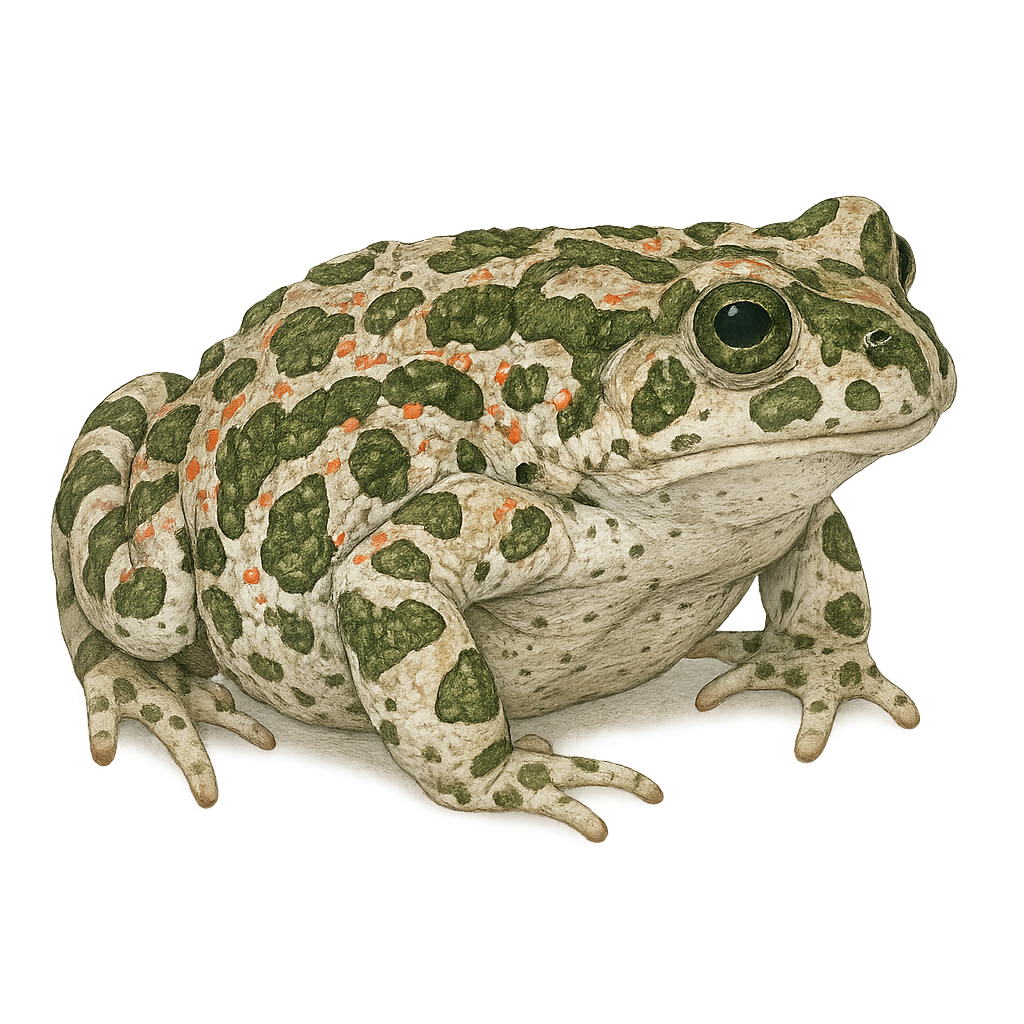Your wildlife photography guide.
Explore the european green toad in detail, study its behavior, prepare your shots.
Where to observe and photograph the european green toad in the wild
Learn where and when to spot the european green toad in the wild, how to identify the species based on distinctive features, and what natural environments it inhabits. The WildlifePhotographer app offers tailored photography tips that reflect the european green toad’s behavior, helping you capture better wildlife images. Explore the full species profile for key information including description, habitat, active periods, and approach techniques.
European Green Toad
Scientific name: Bufotes viridis

IUCN Status: Least Concern
Family: BUFONIDAE
Group: Amphibians
Sensitivity to human approach: Suspicious
Minimum approach distance: 3 m
Reproduction period: March to April
Incubation: N/A
Births: March to April
Habitat:
meadows, steppes, agricultural areas
Activity period :
Mainly active at night, generally discreet during the day.
Identification and description:
The European Green Toad, Bufotes viridis, is a medium-sized amphibian, typically measuring between 6 and 10 cm. Its skin is rough, adorned with green spots on a grayish or brownish background, allowing it to blend effectively into its natural surroundings. It is primarily found in Central and Eastern Europe, as well as Western Asia. Preferring open habitats such as meadows, steppes, and agricultural areas, it is also present in urban gardens. Mainly active at night, it feeds on insects, spiders, and other small invertebrates. Its ability to adapt to various environments and its varied diet make it a resilient species, although it is threatened by habitat loss and pollution.
Recommended lens:
Macro – adjust based on distance, desired framing (portrait or habitat), and approach conditions.
Photography tips:
To photograph the European Green Toad, it is advisable to use a macro lens to capture the details of its textured skin and distinctive patterns. Shoot preferably at dusk or night when the animal is most active. Approach slowly to avoid scaring it, maintaining a safe distance of about 3 meters. Use a tripod to stabilize your camera and prevent motion blur. If possible, use soft lighting to avoid reflections on its moist skin.
The WildlifePhotographer App is coming soon!
Be the first to explore the best nature spots, track rutting seasons, log your observations, and observe more wildlife.
Already 1 430 wildlife lovers subscribed worldwide

